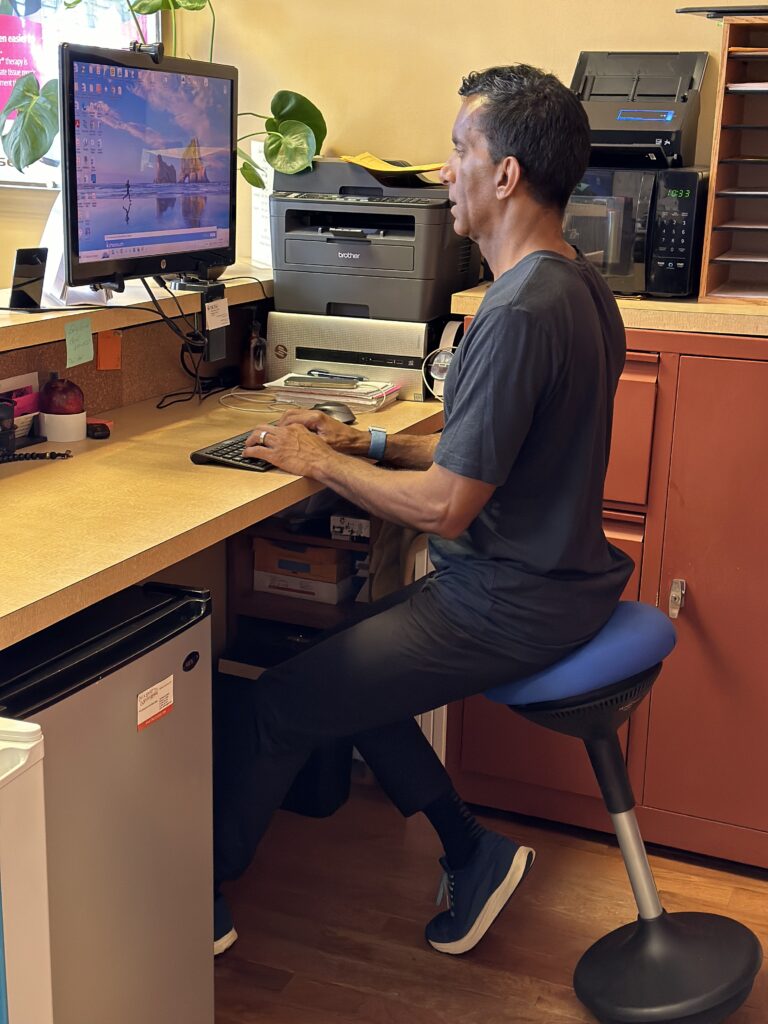A large portion of the work force sits at a computer all day with their backs hunched, their shoulders caved in, and their head telescoping forward (the unhealthy C-curve). This problem occurs when we don’t have a strategy for stabilizing the body in a neutral position (an S-curve, which is the proper and normal anatomical position for the spine). If not mindfully stabilized, the spine will default into poor posture habits. Your body can remodel itself into a better posture and if you work on it daily, good posture will be more automatic.
One of the first things to do in order to improve sitting posture while at your work desk is to put the pelvis in a neutral position. I like sitting on the edge of a chair or stool. The idea is to lean against the edge, not to sit directly on the top of the stool. My favorite type of stool is one with a semi-round base. Notice in the picture below that I’m sitting with the stool tilted forward. This forward-tilting position automatically puts my pelvis into a more neutral position, which is foundational for keeping the proper S-curve.

I also like the prospect of a varying height, standing work desk, which moves up and down. With this option, you can vary your position often, rather than staying in a stagnant position. The stool pictured can vary its height from low to high, while still tilting forward.
Another important positional consideration is the monitor. Notice in the picture that my eyes are looking straight forward. I don’t have to flex my neck downwards in order to see the monitor. This, again, puts my neck in a neutral position.
Importantly, whether sitting or standing, remember to slightly squeeze your glutes just enough to feel them. Also, slightly stiffen your trunk by tightening your abs, almost like shrink wrap. This will help to keep you in your new anatomically correct postural position.
